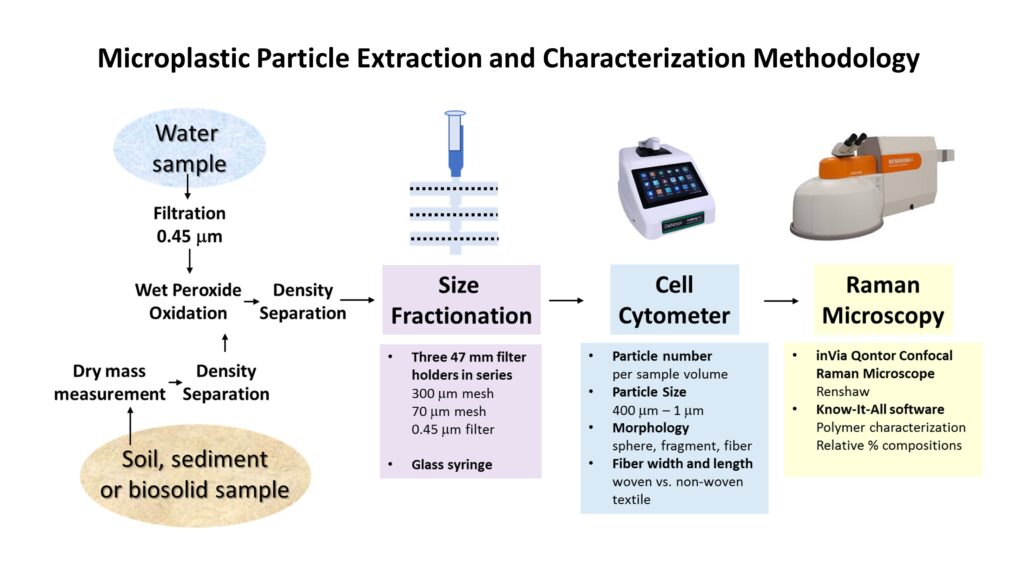OptoKhemia Analytical provides an accurate evaluation of plastic microparticles using innovative and repeatable processes.

We measure the number of plastic microparticles per volume or mass of a sample with sizes ranging from 5 to 1 microns and in a spherical, fragment, or fiber form, as well as measuring the chemical composition with optical and Raman microscopy, thus enhancing NOAA established protocols.
Our analysis improves upon current methodologies:
1) extending the measurement of particle size down to 1 micron.
2) measuring polymer fiber length and width. Fiber width distinguishes between fibers originating from woven textiles (e.g. clothing) from non-woven textiles used extensively in disposable healthcare products, filters, cleaning, and medical wipes, personal hygiene products, diapers, and water-resistant packaging.

Why OKA for Microplastic Analysis
We understand research and can adjust analytical priorities as needed.
We are an integrated team of scientists and engineers that have expertise in environmental microbiology, environmental chemistry, photonics, data management, modeling, and business acumen.
Contamination prevention practices are inherent in what we do.
A Clean Room facility where ultra-clean protocols are routinely implemented.
Our facilities are ideally suited for microplastic analysis including a Raman laboratory, which consists of a Renishaw Invia Raman Microscopic spectroscopy system, a research-grade optical microscope coupled to a high-performance Raman spectrometer.
The ability to image samples in micro or sub-micron sizes, particularly useful for determining the width of microplastic fibers to deduce their origin.
A separate Electron Microscope Laboratory maintains a high-resolution field emission SEM system which is a powerful tool having exceptional resolution down to 1 nm level.
Additional Infrared tools include a Bruker Invenio Fourier Transform Infrared Spectroscopy system. This is the newest research-grade system. It has the capability of scanning the wavelength range covering visible, near-infrared, infrared, and mid-infrared spectrum.